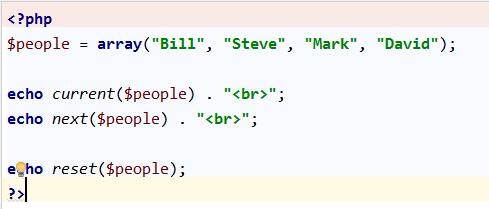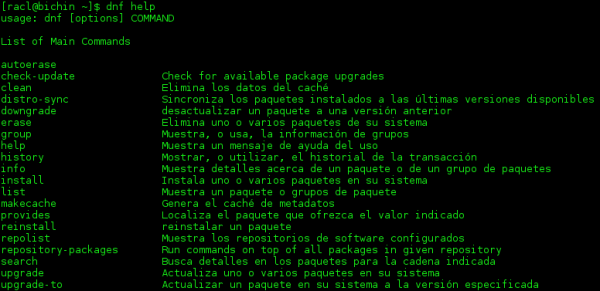10 recommended articles about php next() function
The user has multiple business cards and needs to switch left and right to view them. Switching down is the menu button. Here we need to slide in two places. We use the sliding component swiper provided by WeChat and use it in a nested manner. The first layer is the up and down sliding of the business card display and the menu button. The second layer is the left and right sliding of the business card display (supports mutual embedding. It can be used as a set, so you can use it with confidence). Vertical Adding it means sliding vertically, removing it means sliding left and right. The overall structure is as follows: The click event is bound to the data switching method because it needs to support multiple click switching. The initialization data is nextSlide: look at the nextSlide event again. currentSlide is the index of the current page. Changing it can complete the switching effect. You can see in the figure above that cs is set to 0 when initializing the data. Therefore, just assign the current data.cs+1, and then switch the bound click event clickNext to nextSlideAgain. Let’s look at the nextSlideAgain event again, which subtracts 1 index to achieve the switching effect of multiple clicks. The specific effects can be seen. Click on the personal business card to enter
1. Summary page detailed example introduction

##Introduction: The user has multiple business cards and needs to switch left and right to view them. Switching down is the menu button. Here we need to slide in two places. We use the sliding component swiper provided by WeChat and use it in a nested manner. The first layer is the up and down sliding of the business card display and the menu button. The second layer is the left and right sliding of the business card display (supports mutual embedding. It can be used as a set, so you can use it with confidence). Vertical Adding it means sliding vertically, removing it means sliding left and right. The overall structure is as follows: The click event is bound to the data switching method because it needs to support multiple click switching. The initialization data is nextSli...
2. Detailed explanation about business card boxes and business card holders

Introduction: The user has multiple business cards and needs to switch left and right to view them. Switching down is the menu button. Here we need to slide in two places. We use the sliding component swiper provided by WeChat and use it in a nested manner. The first layer is the up and down sliding of the business card display and the menu button. The second layer is the left and right sliding of the business card display (supports mutual embedding. It can be used as a set, so you can use it with confidence). Vertical Adding it means sliding vertically, removing it means sliding left and right. The overall structure is as follows: The click event is bound to the data switching method because it needs to support multiple click switching. The initialization data is nextSli...
3. Detailed introduction to Android source code

Introduction: This article is a detailed analysis and introduction to the method of obtaining Android source code under Windows. Friends who need it can refer to the preface: omitted! There are countless reasons for obtaining source code~~~ 1. Install the GIT tool. GIT is a distributed version control software created by Linus Torvalds to manage Linux kernel development. Download address: code.google.com/p/msysgit/ Continue the installation to the end. 2. Create a new folder under a disk with a larger disk space to store the source code. I...
4. php Detailed explanation of usage examples of array operation functions current, next and reset functions

Introduction: The current() function in PHP returns the current element (unit, which is the first element of the array) in the array. The next() function points the internal pointer to the array. The next element in the array and outputs the value of the element. The reset() function points the internal pointer to the first element in the array and outputs the value of the element. This article mainly introduces current, next and reset in PHP. Function usage, in the form of examples, details the specific usage of the functions current, next and reset for array operations in PHP. It has certain reference value for in-depth understanding of the usage of arrays. I hope it will be helpful to everyone's understanding of arrays
5. WeChat development: accesstoken tutorial to obtain user fan list

Introduction: Get the next 10,000 items through next_openid. Generally, you need to do this when there are more than 10,000 fans. When the number of fans is small, you do not need to call the URL interface.
6. ASP's two functions for generating random passwords

Introduction: ASP's two functions for generating random passwords: Function 1<%function makePassword(byVal maxLen)Dim strNewPassDim whatsNext, upper, lower, intCounterRandomizeFor intCounter = 1 To maxLenwhatsNext = Int((1 - 0 + 1) * Rnd + 0)If whatsNext = 0 Then'characterupper = 90lower = 65Elseupper = 5
##7. Detailed graphic tutorial on how to install Nextcloud using Nginx and PHP7-FPM in CentOS7

Introduction: This article mainly introduces in detail how to use Nginx and PHP7-FPM to install Nextcloud in CentOS7. Nextcloud will be run through Nginx and PHP7-FPM. , while using MariaDB as the database system.
8. MySQL Database Optimization (1)—MySQL Engine

9.
python iterator and itertools module

10 multiple times.

[Related Q&A recommendations]:
innodb - How to implement the mysql thread-safe nextval() method javascript - Is there any in Vue The hook function after the event ends. javascript - Different browser situations refer to different avalon filesjavascript - vue is used in computed The $nextTick method cannot dynamically update dom
##node.js - vue-resource, how to change the response format?
The above is the detailed content of 10 recommended articles about php next() function. For more information, please follow other related articles on the PHP Chinese website!

Hot AI Tools

Undresser.AI Undress
AI-powered app for creating realistic nude photos

AI Clothes Remover
Online AI tool for removing clothes from photos.

Undress AI Tool
Undress images for free

Clothoff.io
AI clothes remover

Video Face Swap
Swap faces in any video effortlessly with our completely free AI face swap tool!

Hot Article

Hot Tools

Notepad++7.3.1
Easy-to-use and free code editor

SublimeText3 Chinese version
Chinese version, very easy to use

Zend Studio 13.0.1
Powerful PHP integrated development environment

Dreamweaver CS6
Visual web development tools

SublimeText3 Mac version
God-level code editing software (SublimeText3)

Hot Topics
 1657
1657
 14
14
 1415
1415
 52
52
 1309
1309
 25
25
 1257
1257
 29
29
 1229
1229
 24
24
 PHP 8.4 Installation and Upgrade guide for Ubuntu and Debian
Dec 24, 2024 pm 04:42 PM
PHP 8.4 Installation and Upgrade guide for Ubuntu and Debian
Dec 24, 2024 pm 04:42 PM
PHP 8.4 brings several new features, security improvements, and performance improvements with healthy amounts of feature deprecations and removals. This guide explains how to install PHP 8.4 or upgrade to PHP 8.4 on Ubuntu, Debian, or their derivati
 How do you parse and process HTML/XML in PHP?
Feb 07, 2025 am 11:57 AM
How do you parse and process HTML/XML in PHP?
Feb 07, 2025 am 11:57 AM
This tutorial demonstrates how to efficiently process XML documents using PHP. XML (eXtensible Markup Language) is a versatile text-based markup language designed for both human readability and machine parsing. It's commonly used for data storage an
 Explain JSON Web Tokens (JWT) and their use case in PHP APIs.
Apr 05, 2025 am 12:04 AM
Explain JSON Web Tokens (JWT) and their use case in PHP APIs.
Apr 05, 2025 am 12:04 AM
JWT is an open standard based on JSON, used to securely transmit information between parties, mainly for identity authentication and information exchange. 1. JWT consists of three parts: Header, Payload and Signature. 2. The working principle of JWT includes three steps: generating JWT, verifying JWT and parsing Payload. 3. When using JWT for authentication in PHP, JWT can be generated and verified, and user role and permission information can be included in advanced usage. 4. Common errors include signature verification failure, token expiration, and payload oversized. Debugging skills include using debugging tools and logging. 5. Performance optimization and best practices include using appropriate signature algorithms, setting validity periods reasonably,
 Explain late static binding in PHP (static::).
Apr 03, 2025 am 12:04 AM
Explain late static binding in PHP (static::).
Apr 03, 2025 am 12:04 AM
Static binding (static::) implements late static binding (LSB) in PHP, allowing calling classes to be referenced in static contexts rather than defining classes. 1) The parsing process is performed at runtime, 2) Look up the call class in the inheritance relationship, 3) It may bring performance overhead.
 PHP Program to Count Vowels in a String
Feb 07, 2025 pm 12:12 PM
PHP Program to Count Vowels in a String
Feb 07, 2025 pm 12:12 PM
A string is a sequence of characters, including letters, numbers, and symbols. This tutorial will learn how to calculate the number of vowels in a given string in PHP using different methods. The vowels in English are a, e, i, o, u, and they can be uppercase or lowercase. What is a vowel? Vowels are alphabetic characters that represent a specific pronunciation. There are five vowels in English, including uppercase and lowercase: a, e, i, o, u Example 1 Input: String = "Tutorialspoint" Output: 6 explain The vowels in the string "Tutorialspoint" are u, o, i, a, o, i. There are 6 yuan in total
 What are PHP magic methods (__construct, __destruct, __call, __get, __set, etc.) and provide use cases?
Apr 03, 2025 am 12:03 AM
What are PHP magic methods (__construct, __destruct, __call, __get, __set, etc.) and provide use cases?
Apr 03, 2025 am 12:03 AM
What are the magic methods of PHP? PHP's magic methods include: 1.\_\_construct, used to initialize objects; 2.\_\_destruct, used to clean up resources; 3.\_\_call, handle non-existent method calls; 4.\_\_get, implement dynamic attribute access; 5.\_\_set, implement dynamic attribute settings. These methods are automatically called in certain situations, improving code flexibility and efficiency.
 PHP and Python: Comparing Two Popular Programming Languages
Apr 14, 2025 am 12:13 AM
PHP and Python: Comparing Two Popular Programming Languages
Apr 14, 2025 am 12:13 AM
PHP and Python each have their own advantages, and choose according to project requirements. 1.PHP is suitable for web development, especially for rapid development and maintenance of websites. 2. Python is suitable for data science, machine learning and artificial intelligence, with concise syntax and suitable for beginners.
 PHP: A Key Language for Web Development
Apr 13, 2025 am 12:08 AM
PHP: A Key Language for Web Development
Apr 13, 2025 am 12:08 AM
PHP is a scripting language widely used on the server side, especially suitable for web development. 1.PHP can embed HTML, process HTTP requests and responses, and supports a variety of databases. 2.PHP is used to generate dynamic web content, process form data, access databases, etc., with strong community support and open source resources. 3. PHP is an interpreted language, and the execution process includes lexical analysis, grammatical analysis, compilation and execution. 4.PHP can be combined with MySQL for advanced applications such as user registration systems. 5. When debugging PHP, you can use functions such as error_reporting() and var_dump(). 6. Optimize PHP code to use caching mechanisms, optimize database queries and use built-in functions. 7




